This is a special post on Sherab Choeling Nunnery and Institute, one of the 7 nunneries in northern India supported by the Tibetan Nuns Project. It features photos and an audio recording of the nuns chanting by French photographer, Olivier Adam, who visited the nunnery in the summer of 2015.
This remote nunnery was built in 1995 by 20 nuns and their teacher in the Spiti Valley, an arid mountain valley located high in the Himalaya mountains in the north-eastern part of the Indian state of Himachal Pradesh.
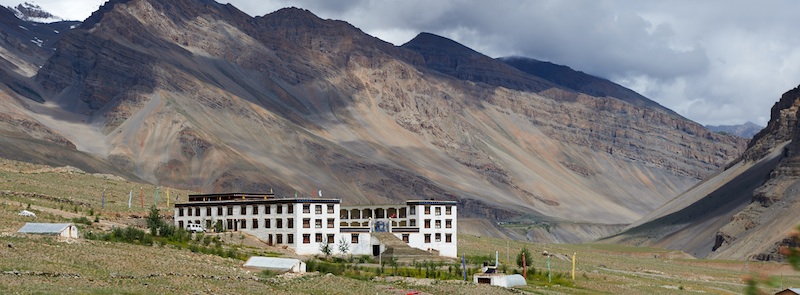
The nunnery was built to address the problem of inadequate education for women and girls in the region. The vision is to educate Himalayan Buddhist nuns who would otherwise have no opportunity to receive any formal schooling or spiritual education. It is a non-sectarian nunnery that recognizes the beauty and value in all Buddhist traditions.
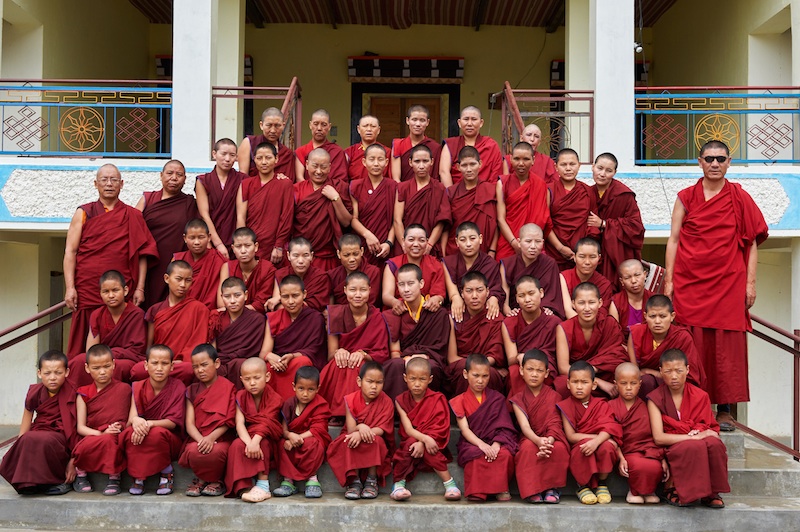
Typically, women and girls who live in remote areas like Spiti and who are interested in studying or practicing their religion have very few options. The Tibetan Nuns Project was approached by the nunnery in 2006 to help them develop their institution and we accepted them into our sponsorship program.
The nunnery is very secluded and lies in the village of Morang (between Manali and Tabor) at 4,000-feet altitude. The nunnery was consecrated in 1995 by His Holiness the Dalai Lama, who encouraged the nuns to study. There is a main building, a prayer hall, a classroom, an office, a kitchen and a storeroom.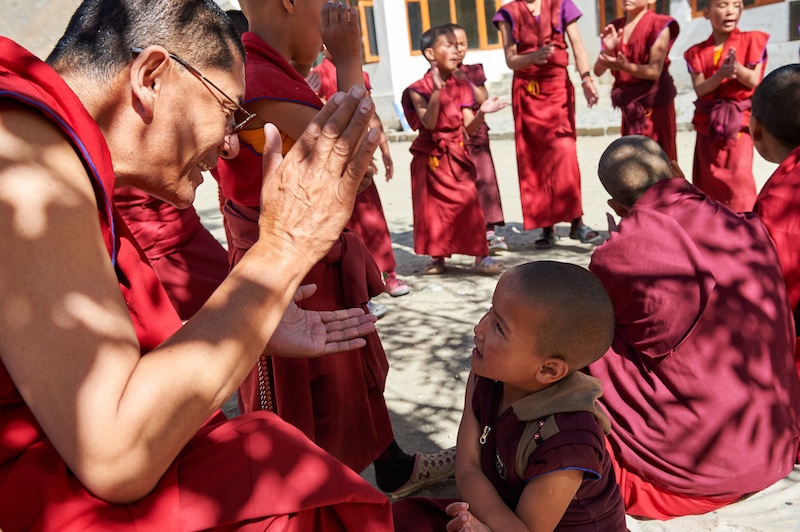
Although the area of Lahaul-Spiti is part of India, ethnically, the people are descended from Tibetans and the majority are devout Buddhists. They have preserved an ancient Tibetan culture, speaking an old dialect of the Tibetan language, as written in Tibetan scriptures.
Sherab Choeling Nunnery and Institute was the first religious educational project for Spiti women. Traditionally women in this region have suffered from many social and educational disadvantages. Many have been deprived of any kind of education, and this institute is the first in Spiti to provide women with the opportunity to overcome these disadvantages.
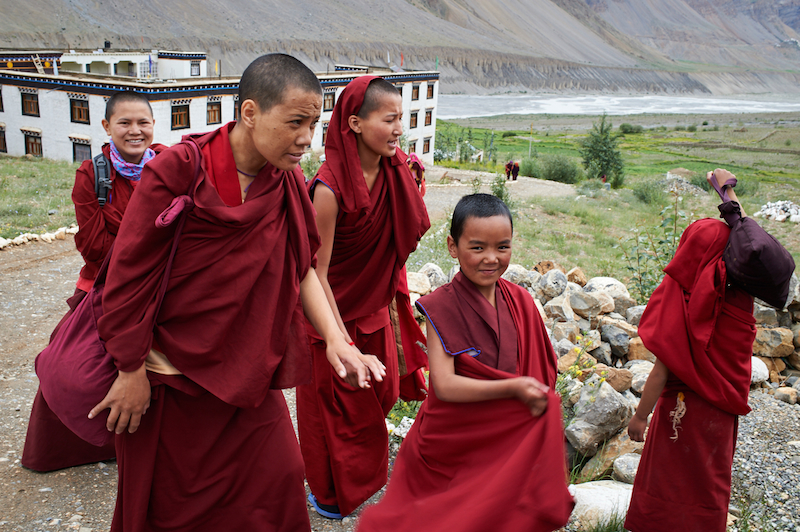
The nuns at Sherab Choeling follow a 17-year study program. The curriculum is designed to educate the nuns in Buddhist philosophy, meditation, Tibetan language and literature, in addition to a basic education in English, Hindi and math. The broad education is intended to provide the nuns with necessary skills to educate future generations of nuns and the communities from which they come.

There are currently 55 nuns at Sherab Choeling Nunnery, the youngest being only 5 years old. At the time of posting this blog, there are 17 new nuns at the nunnery who are eagerly awaiting sponsorship so that they can pursue their studies. To sponsor a nun, visit https://tnp.org/youcanhelp/sponsor/
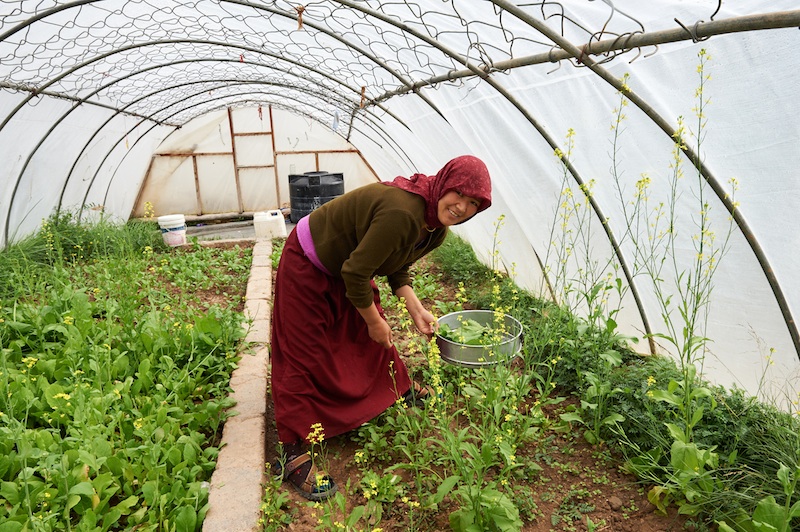
Summer is the most important and busy season at the nunnery. The nuns must work hard in the fields and store firewood for the winter in addition to concentrating on their studies. This summer the nuns are experimenting with growing cabbage outdoors on a small plot of land. Tomatoes, cabbage, and spinach grow well in the greenhouse that is well maintained by the nuns.
 The nuns have difficult living conditions. They often face long harsh winters and heavy snowfalls. During winter the region is cut off from neighboring villages so the nuns must stock up their daily supplies well before the onset of cold weather. During the coldest months, the nuns hold their classes, prayers and meetings in the kitchen because it is warmer and helps to save wood.
The nuns have difficult living conditions. They often face long harsh winters and heavy snowfalls. During winter the region is cut off from neighboring villages so the nuns must stock up their daily supplies well before the onset of cold weather. During the coldest months, the nuns hold their classes, prayers and meetings in the kitchen because it is warmer and helps to save wood.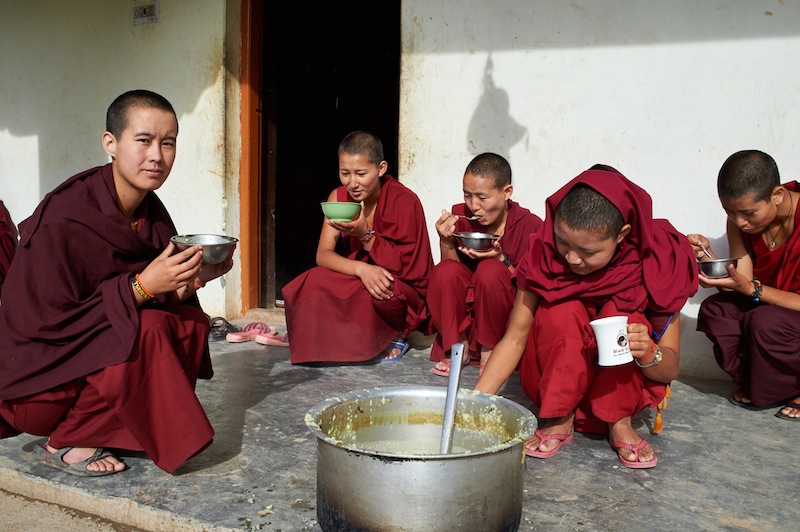
This past winter the Spiti Valley experienced an extremely heavy snowfall and all the local villages were cut off. Unable to get supplies, the nuns ran out of cooking gas and for over two months had to rely solely on firewood to cook. In order to fetch water from the nearby village, the nuns had to clear a path that was waist-deep in snow. Thankfully they had enough stores of vegetables and tsampa (roasted barley flour) to last them through the winter months.
The nuns are very positive about their future and someday want to be able to serve as teachers back in their villages. Here is an audio recording of the nuns reciting the Lama Chopa or Guru Puja.

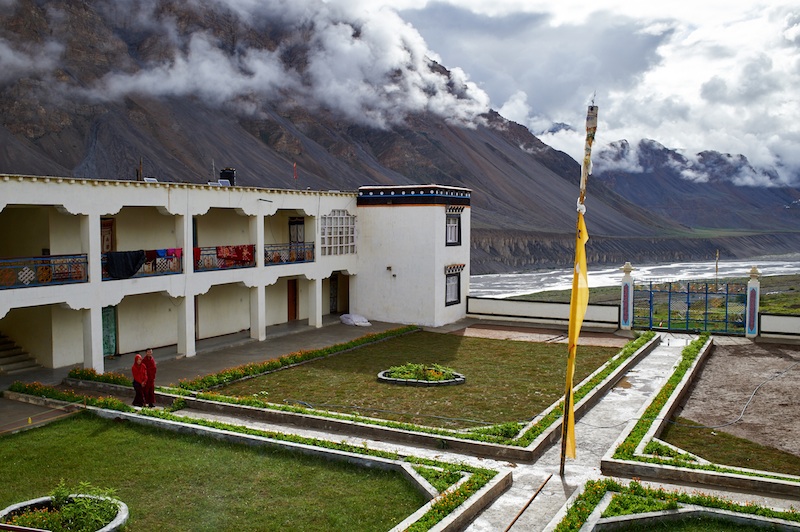

The best way to help the nuns on the long run is the sponsorship and you can visit https://tnp.org/youcanhelp/sponsor/. You can also help them in buying some Fine Art prints on my Etsy shop: http://www.daughtersofbuddha.etsy.com. 50% of the sales are going to Tibetan Nuns Project. It is a wonderful way to find something gorgeous for a loved one while supporting an amazing cause!
You will recognize some of the photos published in this article.
Olivier
Full of admiration for the purity of their lives and dedication. Metta to all.
Thank you for sharing the rich and wonderful photos and audio.
Meditative chants.. beautiful pictures.. Thank you.
Hello from Pennsylvania. Love & Light to all of you.